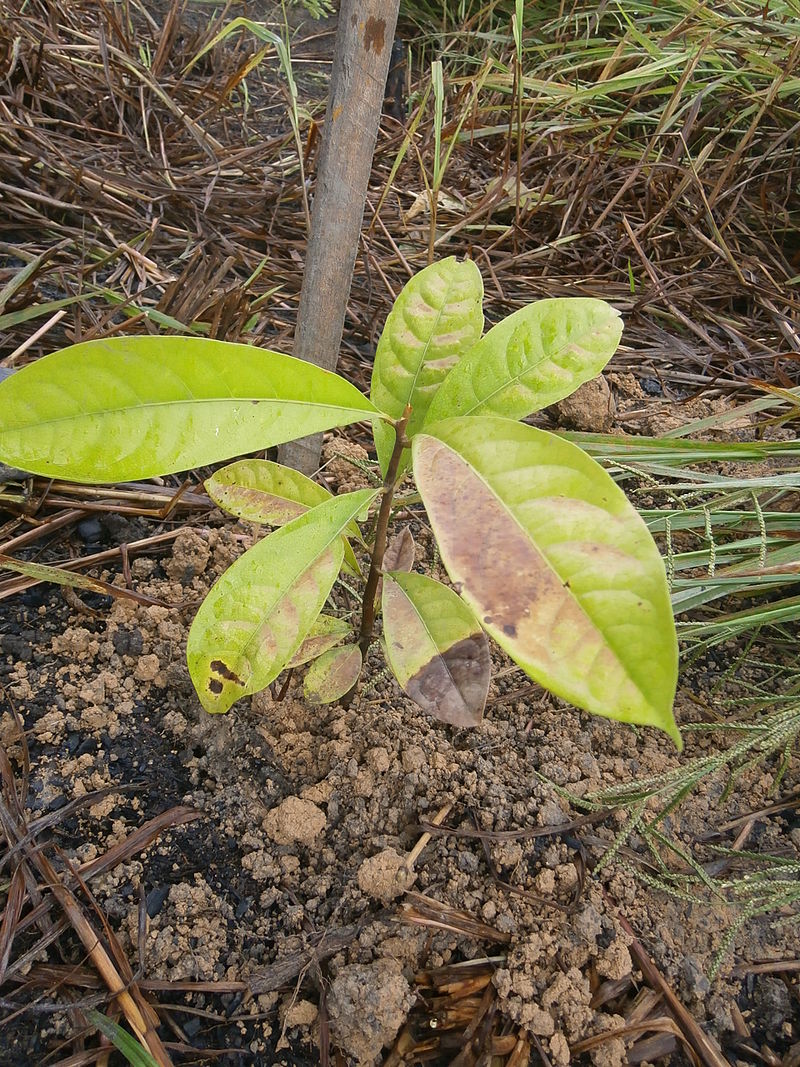
Christma chota Mendoza, CC BY-SA 4.0 via Wikimedia
Solomon Islands
Rosewood
Aniba rosaedora

Christma chota Mendoza, CC BY-SA 4.0 via Wikimedia
General Description / Cultural Significance
The rosewood tree (Aniba rosaeodora) is viewed primarily an ornamental species that can reach heights of up to 125 feet (38 meters). However, the rosewood tree plays a crucial role in its native ecosystems. As a large canopy tree, it provides habitat and food for a variety of wildlife, including birds, insects, and small mammals. Its extensive root system helps to stabilize the soil, preventing erosion and promoting water retention. The tree’s presence contributes to the overall biodiversity and health of the forest, supporting complex ecological interactions and promoting a balanced ecosystem.
Additionally, the rosewood tree contributes to carbon sequestration, helping to mitigate the impacts of climate change. By absorbing carbon dioxide from the atmosphere and storing it in its biomass, the tree helps to reduce the overall concentration of greenhouse gases. Protecting and conserving rosewood forests is therefore essential for maintaining ecological balance and combating global climate change.
The tree bears yellowish-white flowers that are connected to seedpods, which are shed and buried during the winter. These flowers are distinguished by a notable olfactory profile that blends notes of citrus, grapefruit, and petitgrain. Rosewood oil, extracted from the tree, is renowned not only for its pleasant fragrance but also for its therapeutic properties. It can regenerate tissue, soften skin, and treat various skin conditions, including acne and eczema.
The wood of the rosewood tree is characterized by a deep brown to purplish color, often streaked with a sheer black resin. Known for its extreme durability and density, rosewood is highly valued in construction and interior design. Its attractive grain and capacity for a deep polish make it particularly desirable for flooring, countertops, and cabinetry.
In the Solomon Islands, rosewood significantly contributes to the national economy, accounting for nearly 70% of total export revenue. The country has two international seaports that facilitate the export of timber, which is subsequently trimmed, polished, and distributed for construction purposes. The primary consumers of Solomon Islands rosewood are New Zealand and Australia, both of which have robust infrastructure and demand for high-quality timber.
Climate Change / Conservation Status
The Solomon Islands are extremely small in terms of land mass and much of their economy is supported by the export of rosewood. The tree is facing significant environmental challenges due to deforestation, exacerbated by the economic reliance on wood exports.
Even though the trees are perpetually sprouting due to the constant spread of their seedpods, they are challenged by climate change. Fully mature trees that have the necessary wood can take decades to grow. Though the IUCN and other organizations have classified Aniba rosaedora as an endangered species, there is speculation of extinction soon if more aggressive conservation efforts are delayed.
Efforts to limit the rapid consumption of rosewood have taken shape in the form of price increases as well as a limit per organization, customer, or buyer.
Alternate Names
Rosewood
Pau-rosa
Rosewood tree
Cara-cara
Sources
Mission of Solomon Islands to the United Nations. This statement can be found on the World Sensorium original website.
“Overview of Timber Sector of Solomon Islands.” Timber Trade Portal, ATIBT, 2020, www.timbertradeportal.com/en/solomon-islands/147/timber-sector.
“Rosewood (Solomon Islands).” BBSTimbers, Timbers Ltd, Apr. 2023, bbstimbers.co.nz/wp-content/uploads/2014/09/Rosewood-1.pdf.
“Rosewood.” Encyclopædia Britannica, Encyclopædia Britannica, inc., 7 June 2024, www.britannica.com/plant/rosewood-tree-and-timber.

